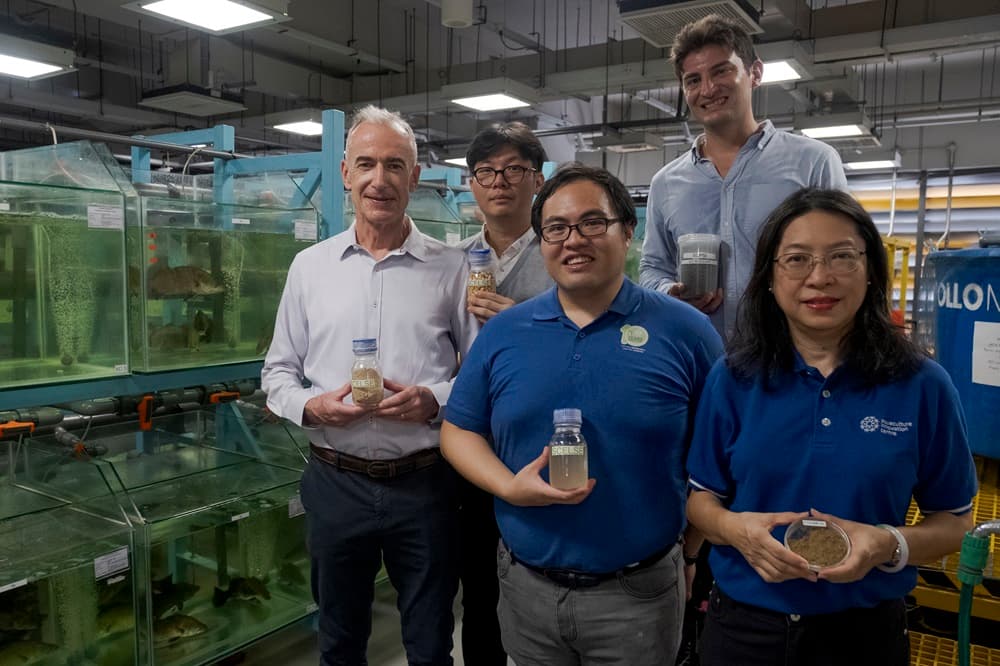Fish farming may be getting much more eco-friendly, courtesy of soybean processing wastewater. Microbes in the liquid have been used to produce proteins that could replace the fishmeal which is currently fed to farmed fish.
One of the great ironies of aquaculture lies in the fact that even though the captive-bred fish themselves aren’t wild-caught – thus taking the pressure off wild stocks, and reducing accidental bycatch of non-target species – their pelletized feed consists of fishmeal made of smaller fish that are wild-caught.
With this conundrum in mind, a number of groups are developing greener alternatives to fishmeal. One approach involves growing certain types of bacteria in bioreactors. Those microbes produce nutrients known as single cell proteins which are harvested from the reactor’s liquid growth media, dehydrated, then used as fish feed.
Unfortunately, though, the growth media can be expensive, plus it’s often difficult to maintain just the right growing conditions in the bioreactor. It would be much cheaper and easier to use liquid in which robust populations of protein-producing bacteria were already naturally present.
Soybean processing wastewater is just such a liquid.
In a recent study, scientists from Singapore’s Nanyang Technological University (NTU) and Temasek Polytechnic started out by obtaining soy wastewater from a food processing company.

Nanyang Technological University
The sludgy liquid – which was rich in Acidipropionibacterium and Propioniciclava bacteria – was placed in four 4-liter (1-gal) bioreactors for 136 days. Throughout that period it was kept at low oxygen levels and a temperature of 30 ºC (86 ºF).
Single cell proteins produced by the bacteria were then harvested from the sludge. In the next step of the experiment, one group of 60 young Asian sea bass received a diet consisting of half fishmeal and half the single cell proteins for 24 days, while a control group was fed only fishmeal.
At the end of that period, it was found that the fish in both groups had grown by the same amount (in fact, the growth of the protein-fed fish was more consistent). This result was largely expected, given the fact that both diets almost entirely met the protein, essential amino acid and fat requirements for juvenile Asian sea bass. The only thing lacking in both diets was a sufficient amount of the amino acid lysine, which could be added in real-world use.
As an added benefit, producing fish feed in this manner would utilize a substance that might otherwise go unused. By contrast, some existing feeds incorporate actual soybean meal that could otherwise be consumed by humans.
“Our study has successfully demonstrated the potential for converting soybean processing wastewater into a valuable resource for aquaculture feed, contributing to the transition to a circular bioeconomy,” says NTU’s Prof. Stefan Wuertz.
A paper on the research was recently published in the journal Scientific Reports.
Source: Nanyang Technological University
Source of Article